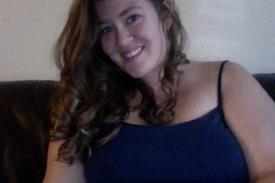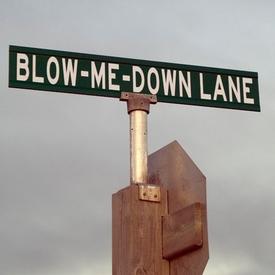Don't trust MFP food values
Replies
-
yeah i noticed some where off... I dunno why ppl lie when they input the stuff.. it could be that, or it could simply be the companies have altered their info since it was put in and noone has noticed. When I catch a difference i try to edit it but MFP doesn't always give me the option
 0
0 -
Well, the verification isn't the problem - it may be right (to the person who created it) - just not correct for people in other parts of the world.most of the values for food when I input in my diary have verifications from other mfp users...if you find an item that isn't accurate, then you should feed that back.
Unless something has changed here at MFP, when you edit it to the correct values for where you are or because of changes in the products by the manufacturers it does not change it in the main database, it adds it to your food list as a new entry.0 -
Instead of creating a new food, there is the option to confirm it or change the values to what is correct isn't there?0
-
I always check calories and macros from entries against labels or restaurant website listings. There is a ton of incorrect user-entered data in the MFP collection. It's just the way things work when you let anyone and everyone make entries.
But, for all the entries that skew low, there are plenty that skew high. For example - someone had boneless, skinless, plain chicken breast in the database at 100 calories per ounce. According to the Perdue label, FOUR ounces only has 120 calories. So, also WAY off - but in a different direction.0 -
yeah i noticed some where off... I dunno why ppl lie when they input the stuff.. it could be that, or it could simply be the companies have altered their info since it was put in and noone has noticed. When I catch a difference i try to edit it but MFP doesn't always give me the option

Not necessarily people lying. As stated, the nutritional information changes from country to country. So the same product in Canada will have different values from that in the US or other parts of the world. Also, food companies change their products, sometimes making them "new and improved" other times they don't advertise it. I had one product I liked that had the calories go up but 40 a serving because of this. No mention of it in the packaging, but the calorie number changed from the one purchase to the next.
If the entry has a * beside it in the food database it is user entered, and you should verify it. If it does not it is from the makers of the website and it probably based on USDA numbers.0 -
this is very true. a lot of the times the data is inaccurate, which is why I usually take it as a grain of salt and check food labels (which are said to be somewhat inaccurate as well).
I hope you're logging that grain of salt....
:laugh:0 -
I scan the bar code of the products as much as possible and use that info.0
-
My main problem is that I eat mostly ethnic foods & here where I am the restaurants don't disclose their nutritional info to the customers so I just go by the generic. However if I cook my own food, I input everything manually. And as for the packaged foods, I go by the package content especially the serving size and the amount of serving per package which the majority misses out.
In addition to this, I talked to a nutritionist at my gym & I showed her my diary courtesy of MFP that I eat 1500 cals but when she calculated everything, it only came up with 1080ish cals. She told me that I was overestimating my calories. She told me that it maybe because of the difference in the nutritional content & most of the foods in the database are US based. I'm not from the US.0 -
I scan the bar code of the products as much as possible and use that info.
Unfortunately, even those are wrong too. I have scanned many items and have had to search manually after because the info that comes up is wrong.0 -
I don't get this problem too often at all. Perhaps it's because I've been doing this for so long. For the most part, I know what the general calorie count is for the things I eat but if I notice something is off, I'll double check my packaging and edit it accordingly.
But yes, I can understand this being an issue for non-Americans since their measurement system is different, but hey, the site creators are American so what can you expect? If the roles were reversed, I'd just enter in all my foods in the measurement system I use. I've defintely come across foods that were logged in grams; it doesn't bother me at all, I just find the entry that matches mine and move on. I wouldn't start a post about how off the database is.
Can't please everyone I guess.0 -
What does a metric cup look like exactly?You mean the metric cup, imperial cup or U.S. customary cup?.
A cup measure is approx 237ml. Personally, I like when volume measurements are provided given that not everyone has a food scale.0 -
The confusion is that it's recorded as "one cup" in the MFP database, you had to specify which cup - the imperial cup is 10 fl oz, the metric cup 8.8 fl oz. & the US one 8.3 fl oz.
You mean the metric cup, imperial cup or U.S. customary cup?.
1 cup of something? How is that an accurate measure?
Because it's a standard sized, uniform unit of measurement, perhaps?
A US measuring cup... it will measure 8 fl oz. of liquid... the weights will vary for solids, milk, etc. on a scale, but it's the same standard, uniform unit when measured by volume. Not really any different than anyone else's forms of measurements... I don't see what the confusion or disdain is?
Anything in the MFP database with "1 cup" is worthless unless it states which region cup or the volume in the cup.
It's standard for the US, not globally - this is a global website.0 -
You do know this could cause problems for you also?, it's not that complicated.I don't get this problem too often at all. Perhaps it's because I've been doing this for so long. For the most part, I know what the general calorie count is for the things I eat but if I notice something is off, I'll double check my packaging and edit it accordingly.
But yes, I can understand this being an issue for non-Americans since their measurement system is different, but hey, the site creators are American so what can you expect? If the roles were reversed, I'd just enter in all my foods in the measurement system I use. I've defintely come across foods that were logged in grams; it doesn't bother me at all, I just find the entry that matches mine and move on. I wouldn't start a post about how off the database is.
Can't please everyone I guess.
EU people "correcting" the entries for the foods which results if you getting the wrong information.
It works both ways, something we need to be aware of.
It's nothing about conversion ratios, it's the fact when I look at an MFP entry, I have no indication as to which region the information was created from.
The same with the term cup, "cup" isn't a standard global measurement.
If I created an entry I'd use UK based measurements, which if you used would be wrong - it's not an idle complaint at the site - I was stated a fact that many of the entries will be wrong (pending on geographic location) & advising others to check/create a personal food list (which can't be edited/corrected by people from different regions).0 -
It hasn't caused a problem for me in a year and a half but I appreciate your concern. :flowerforyou:
You do know this could cause problems for you also?, it's not that complicated.I don't get this problem too often at all. Perhaps it's because I've been doing this for so long. For the most part, I know what the general calorie count is for the things I eat but if I notice something is off, I'll double check my packaging and edit it accordingly.
But yes, I can understand this being an issue for non-Americans since their measurement system is different, but hey, the site creators are American so what can you expect? If the roles were reversed, I'd just enter in all my foods in the measurement system I use. I've defintely come across foods that were logged in grams; it doesn't bother me at all, I just find the entry that matches mine and move on. I wouldn't start a post about how off the database is.
Can't please everyone I guess.
EU people "correcting" the entries for the foods which results if you getting the wrong information.
It works both ways, something we need to be aware of.
It's nothing about conversion ratios, it's the fact when I look at an MFP entry, I have no indication as to which region the information was created from.
The same with the term cup, "cup" isn't a standard global measurement.
If I created an entry I'd use UK based measurements, which if you used would be wrong.0 -
I always either add my own or double check EVERYTHING I put in, I evn ask for nutrition menus when I go out to eat or look online before I go....I'm not sure why people would put them in wrong but they need to stop
 0
0 -
Instead of creating a new food, there is the option to confirm it or change the values to what is correct isn't there?
yes, there's this too, i've done this a few times too0 -
I agree and that's why I use my HR monitor. I find it helps me nail down the calories burned and I never rely on the machines anymore. I am also trying to do more exercise outside... no machines there, the HR monitor is essential.0
-
*ggg*
You mean the metric cup, imperial cup or U.S. customary cup?.
1 cup of something? How is that an accurate measure?
Because it's a standard sized, uniform unit of measurement, perhaps?0 -
*ggg*
You mean the metric cup, imperial cup or U.S. customary cup?.
1 cup of something? How is that an accurate measure?
Because it's a standard sized, uniform unit of measurement, perhaps?
The problem is, that not everybody packs the same amount of something in a cup. So even if you use the same let's say metric cup-it still does not mean it will weigh exactly the same as when somebody else fills it. 100gr will always be 100gr. Just use proper measurements and not volumes0 -
my friend said some of those food values are not accurate and we really don't know what calories we are eating. when I am doing 1tbs of peanut butter when i measure how do I know I didn't get 1 1/2 tbsp. eating more calories than what I said. the food values are just a ballpark figure.0
-
1 cup of something? How is that an accurate measure?
Because it's a standard sized, uniform unit of measurement, perhaps?
I have 3 'cups' right in front of me right now and one of them is at least 3 times bigger than the other one..0 -
I wish everything was in the db in grams. If I'm going to bother measuring and logging I may as well aim for accuracy.
As for comparing to labels, I think the majority of what I eat has no label.0 -
I always check the package first....generally MFP is right.If not I just edit it and do the correction0
This discussion has been closed.
Categories
- All Categories
- 1.4M Health, Wellness and Goals
- 398.1K Introduce Yourself
- 44.7K Getting Started
- 261K Health and Weight Loss
- 176.4K Food and Nutrition
- 47.7K Recipes
- 233K Fitness and Exercise
- 462 Sleep, Mindfulness and Overall Wellness
- 6.5K Goal: Maintaining Weight
- 8.7K Goal: Gaining Weight and Body Building
- 153.5K Motivation and Support
- 8.4K Challenges
- 1.4K Debate Club
- 96.5K Chit-Chat
- 2.6K Fun and Games
- 4.8K MyFitnessPal Information
- 12 News and Announcements
- 21 MyFitnessPal Academy
- 1.5K Feature Suggestions and Ideas
- 3.2K MyFitnessPal Tech Support Questions















